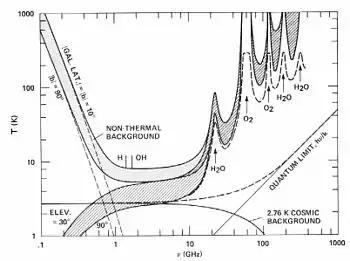
Laser SETI is an instrument that could continuously survey the entire night sky for brief laser pulses. The instrument can look everywhere simultaneously. The technology, which consists of a robust assembly of straightforward optical and mechanical components, has been prototyped and subjected to preliminary tests.[1]
It will observe all of the sky, all of the time so even relatively rare events can be found. Laser SETI can discover pulses over a wide range of pulse durations, and is especially sensitive to millisecond singleton pulses which may have been overlooked in previous astronomical surveys.[2]
As of October 2017, the team had spent close to $50k thus far, have 21 components in hand, 5 on order or in transit, 3 ready to order, and 7 waiting on test results or TBD.[3]
In 2018, the SETI Institute announced that they were going to be able to deploy 8 cameras instead of four, meaning that they can fully monitor two independent fields-of-view.[4]
In 2019, the entity announced that the final logistics were being worked out for the placement of LaserSETI's first observatory at RFO's (Robert Ferguson Observatory) idyllic facility, in Sonoma County.[5]
In summer 2021 a second LaserSETI observatory was being installed in Hawaii, and was operational by Dec 2021.[6] Two of four cameras are fully functional. Cameras are installed in pairs with their diffraction gratings at 90 degrees to each other. Images are read out more than a thousand times a second.[6]
References
- ↑ SETI Institute (July 17, 2017). "Why We Need a New Type of SETI Instrument".
- ↑ David, Leonard (August 7, 2017). "New 'Laser SETI' Approach Seeks Crowdfunding to Seek Out Alien Life". Space.com. Retrieved 2020-07-07.
- ↑ Gilster, Paul (August 14, 2017). "Laser SETI in Context". Centauri Dreams. Retrieved 2020-07-07.
- ↑ Overton, Gail (July 31, 2017). "Laser SETI will look for signals that radio and optical telescopes cannot see". Laser Focus World. Retrieved 2020-07-07.
- ↑ Friday, Alison Klesman (July 2017). "Now is your chance to fund a groundbreaking SETI project". Astronomy.com. Retrieved 2020-07-07.
{{cite web}}: CS1 maint: date and year (link) - 1 2 "LaserSETI Installs 2nd Observatory at Haleakala Observatory".